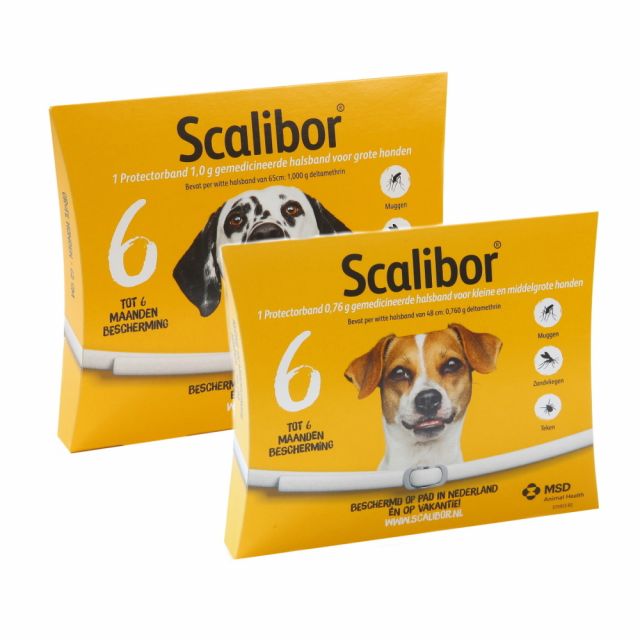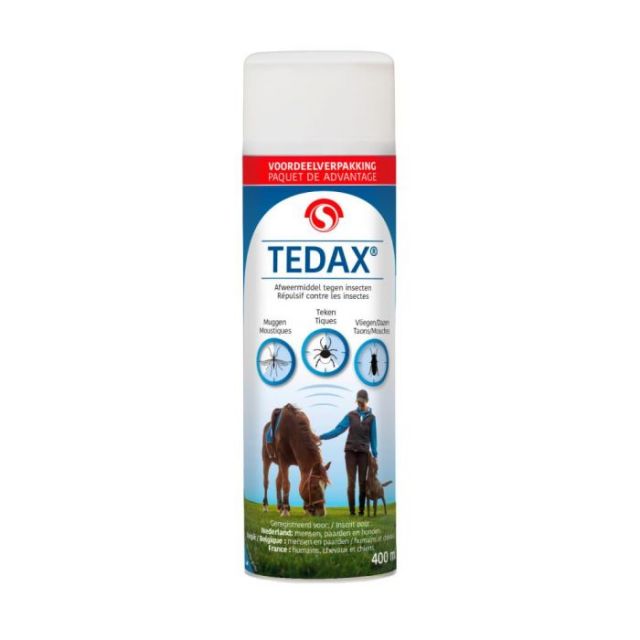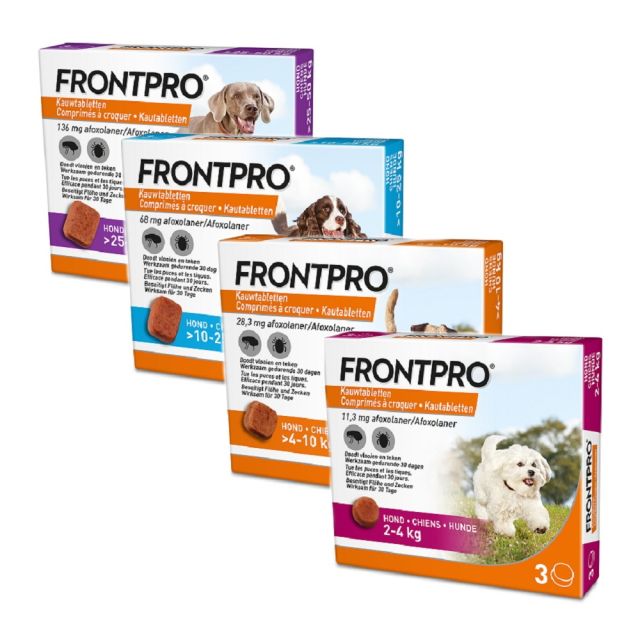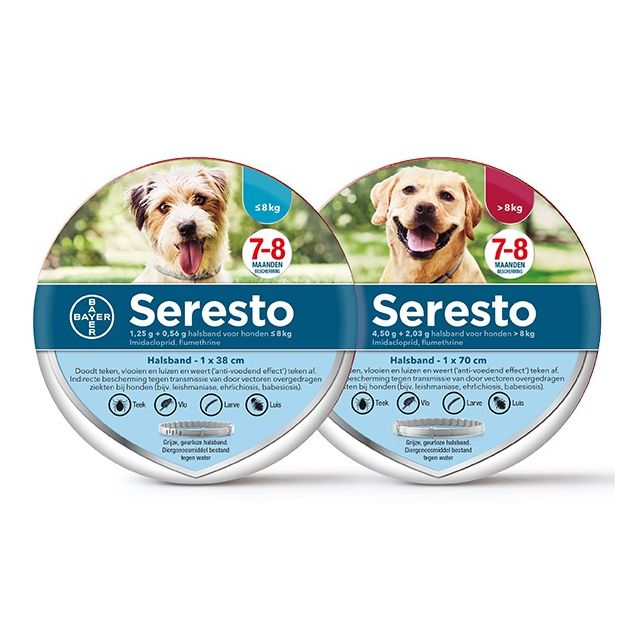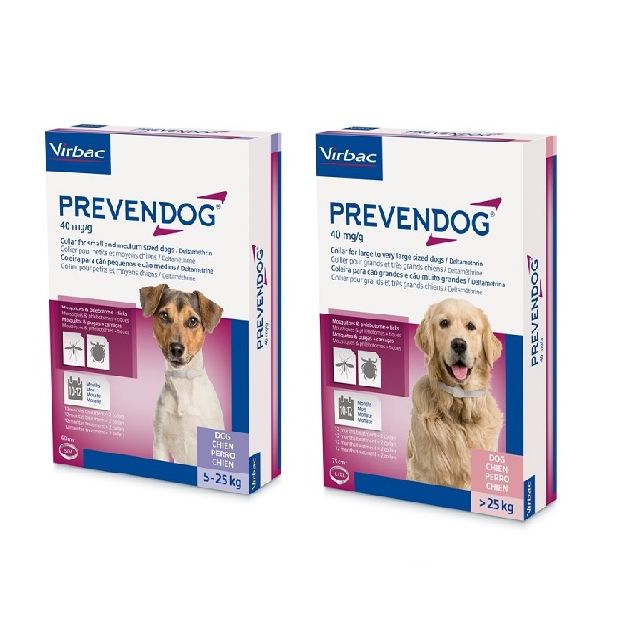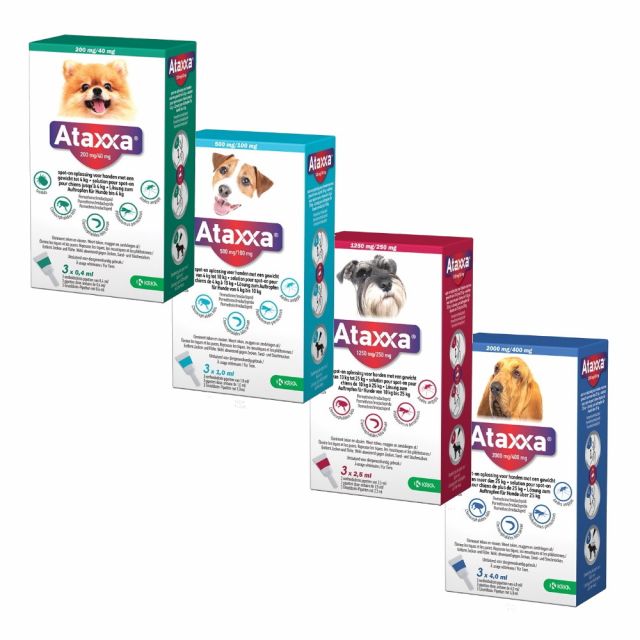Insects in dogs
In addition to fleas and ticks, dogs can also suffer from other small creepy crawlies. Think, for example, of mites, lice, mosquitoes, and sandflies. If you are going on holiday to southern countries, mosquitoes and sandflies can cause nasty diseases, so good preparation is important. Pharmacy4pets helps keep your dog free from pests!
Mites
Mites are not insects, but small arthropods. There are different types of mites that can cause various complaints such as bald patches, intense itching, or 'dandruff' (flakes in the coat). The diagnosis is made by examining a skin scrape and/or flakes under the microscope. We will briefly discuss the most common mites in dogs.
The Demodex mite (puppy mange)
Demodicosis, also known as young dog mange or puppy mange, mainly occurs in young dogs, but it can also occur in older dogs. Demodex is not contagious, as the mite is a 'normal resident' on the dog's skin. Problems arise from overgrowth of the mite due to reduced immunity. The symptoms can vary greatly. The mites mainly cause hair loss, which can be seen as round bald patches. Often, a secondary infection with bacteria occurs, leading to deep skin inflammation.
There are various ways to treat demodicosis and any secondary infection. This can be done with tablets, spot-ons, and shampoo. Many of these products are only available on prescription from your veterinarian. The secondary infection can be treated with antibiotics and/or a special shampoo such as Douxo Pyo. The choice of treatment depends on the severity of the symptoms, the age and breed of the dog, and whether there is an underlying disease. Whatever treatment is chosen, it is important that it is continued for long enough and its effectiveness is monitored through microscopic examination.
Scabies
Scabies, or sarcoptic mange, is caused by the scabies mite (Sarcoptes mite). The mite causes severe itching and skin damage caused by scratching, such as red spots, bumps, and crusts. Often, there is also a secondary bacterial infection. Dogs with scabies go crazy from the itching. Scabies is highly contagious, even to humans. In the Netherlands, the scabies mite is mainly found in (stray) dogs from abroad, but it can also be transmitted by foxes. Fortunately, scabies is easily treated, for example with Stronghold (spot-on) or Frontpro (tablet). Washing with an antibacterial shampoo such as Pyoderm is also usually recommended. Until the dog is healed, contact with other dogs should be avoided. The dog's environment (bedding, etc.) should be thoroughly cleaned.
Fur mite
The most common fur mite is the Cheyletiella mite, also known as the flake mite. Fur mites are contagious to various animal species and can also cause skin irritation in humans. In dogs, fur mites cause flaking ('dandruff') and varying degrees of itching (sometimes no itching at all). Infection with fur mites causes red, itchy bumps in humans. Fur mites are easily treated with Stronghold. In addition to the discussed mites, dogs also have ear mites, eye or autumn mites, and nose mites.
Mosquitoes
In Northern Europe, mosquitoes are mainly annoying. However, in more southern countries, they can also be dangerous! In those countries, mosquitoes can transmit heartworms. These worms can reside in the heart and pulmonary arteries, causing serious problems. Symptoms include fatigue, coughing, difficulty breathing, fever, and heart rhythm disturbances. Symptoms often occur months after infection. If you are traveling to countries where heartworms are prevalent, it is important to administer preventive treatment against heartworms, for example with Milbemax, up to one month after returning from the area.
Sandflies
Sandflies are a type of small mosquito found in warmer countries. They are especially active during sunrise and sunset. Sandflies can transmit the Leishmania parasite, causing the unpleasant chronic disease leishmaniasis. If you are going on holiday to a country where sandflies are present, it is important to protect your dog as much as possible from sandflies. The Scalibor Protectorband is a registered, approved product for use against sandflies. Also, Advantix and Vectra 3D (both spot-ons) can be used for this purpose.
Lice
Lice are not very common in dogs. They mainly cause itching and skin damage caused by scratching. The moving lice and eggs (nits) can be seen in the fur with the naked eye. Lice are only contagious to other dogs. Most flea treatments, such as Advantage or Amflee Combo (both spot-ons), also work well against lice. In addition, washing contact materials at a minimum of 60 degrees Celsius (or leaving them in the freezer overnight) is necessary to prevent (re)infestation.
Bees, wasps, and horseflies
If your dog has been bitten or stung by an insect, a lump or swelling may occur. In the case of a sting from a wasp or bee, it is important to remove the sting if it is still in the skin. Cooling the area often helps. However, make sure never to apply a cold pack or ice directly to your dog's skin; instead, place a towel between. If your dog has been stung in the mouth, consult your veterinarian, as swelling may block the airway. Fortunately, the consequences of a bee or wasp sting are rarely more serious than pain and discomfort caused by the inflammation.
If you have any questions about external parasites in your dog or about products from Pharmacy4Pets, please contact us.

